As an artist, I believe everyone is creative, we may not all be able to draw, but each person is unique and creative. Arts Integration is one of the cornerstones that motivated me to apply to become a teaching artist. Bringing creativity to the classroom is a concept I believe is crucial to gaining knowledge. We are fundamentally creative beings, not that everyone can all draw, but we all create. Bringing creativity into the classroom gives us the unique ability to get ideas from our heads to our hearts using our hands.
The school was grueling. It was taxing. I spent years with my nose to the grindstone and never seeing the results of my effort and in 11th grade, diagnosed with dyslexia, which helped me understand the struggle as to why I was not able to decode the information slung at me. Fast forward 20 years, I’ve now become a mother.
I began watching my children learn, and it was like looking in a mirror. I had this eerie feeling that I had passed my inability to decipher information in a traditional environment onto them. When I would bring my concerns to their educators, they promptly dismissed. Continuing on their educational journey, I watched my youngest daughter continually lose education ground. She would put forth tremendous amounts of effort, profoundly wanting to read, but nothing clicked. My instinct told me to research.
As I began sifting through book after book on learning disabilities, specifically dyslexia, I stumbled across fascinating research, which suggested that people with dyslexia see the world in pictures. With that knowledge, I began to repackage the curriculum used by the school to teach my daughter. I took the words and turned them into pictures. The repackaging or putting text into pictures was the boost she needed for the gates of learning to open. The information began to pass from her head to her heart. Instead of being given mere information, we had capitalized a way to make it knowledge. It revolutionized the approach to educating her.
Though this is a personal journey, I can’t help but think other struggling students can benefit from what our family has uncovered. I want to be part of figuring out ways to bring creativity into the classroom so all our students can thrive. The education journey begins when we begin with the foundation that we are ALL creative beings. Creativity is the key to converting information into knowledge.
Booth, E. (2010). The History of Teaching Artistry: Where we come from, are, and are heading. Retrieved from https://uarts.instructure.com/courses/3054/files/1621?module_item_id=1133.
Booth, E. (2017). A New Framework for Understanding the Field of Artists Who Work in Education and Community Settings. Retrieved June 20, 2020, from https://uarts.instructure.com/courses/3054/files/1620?module_item_id=1132
Lincoln Center Education Teaching Artist Development Labs
Growing the Ultimate Sustainable Crop: CREATIVE CAPACITY IN VERMONT STUDENTS. (2018, January 29). Retrieved from https://teachingartistsguild.org/essential_grid/growing-the-ultimate-sustainable-crop-creative-capacity-in-vermont-students/
Roberts, J. L. (2013). The Power of Patience. Harvard Magazine, 40-43. Retrieved June 20, 2020, from https://harvardmagazine.com/2013/11/the-power-of-patience.
© 2020 • All content within this project is strictly the property of Carla B. Long and is not for public use without permission. Report Abuse © 2020 • All content within this project is strictly the property of Carla B. Long and is not for public use without permission. Report Abuse
















